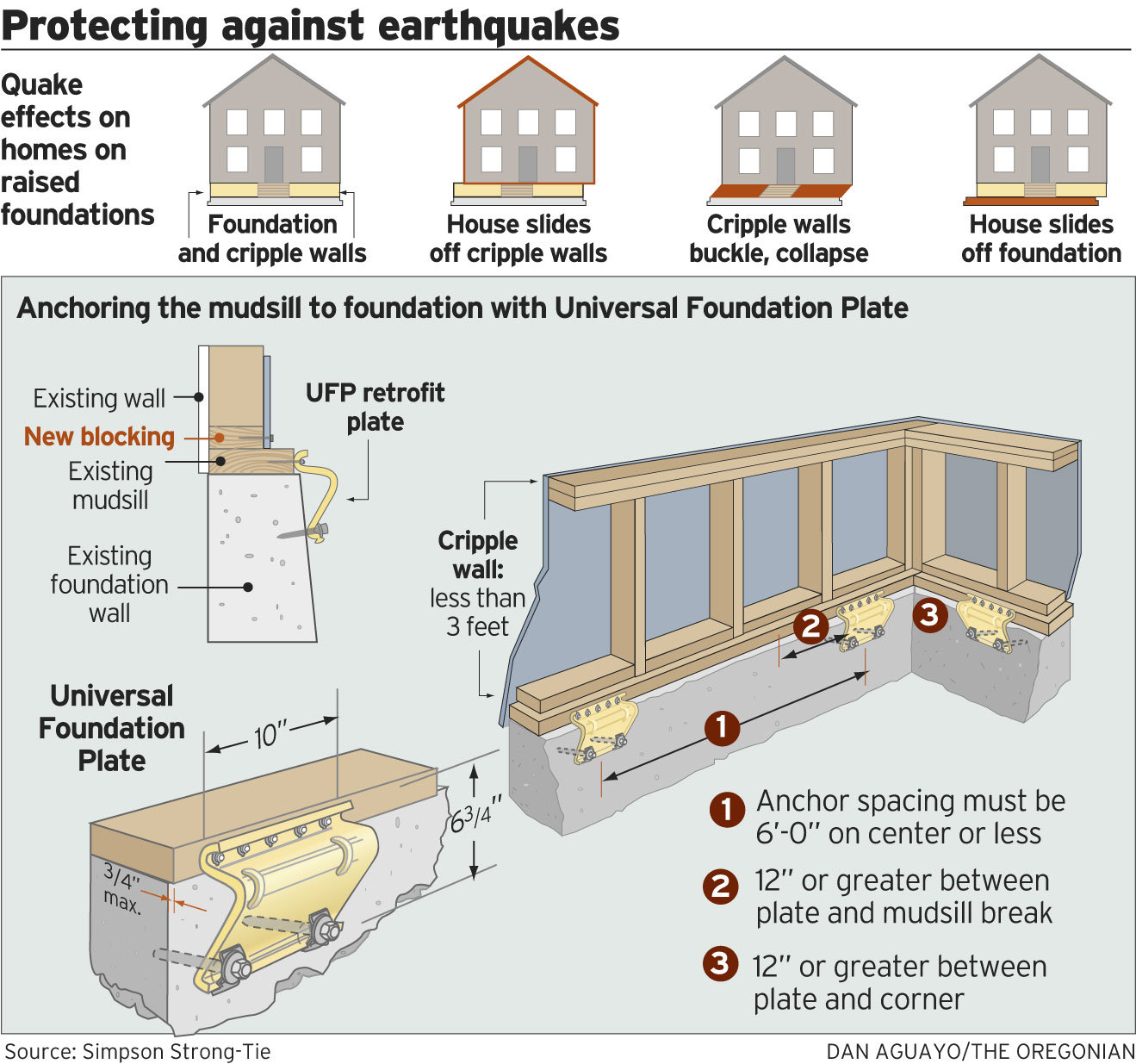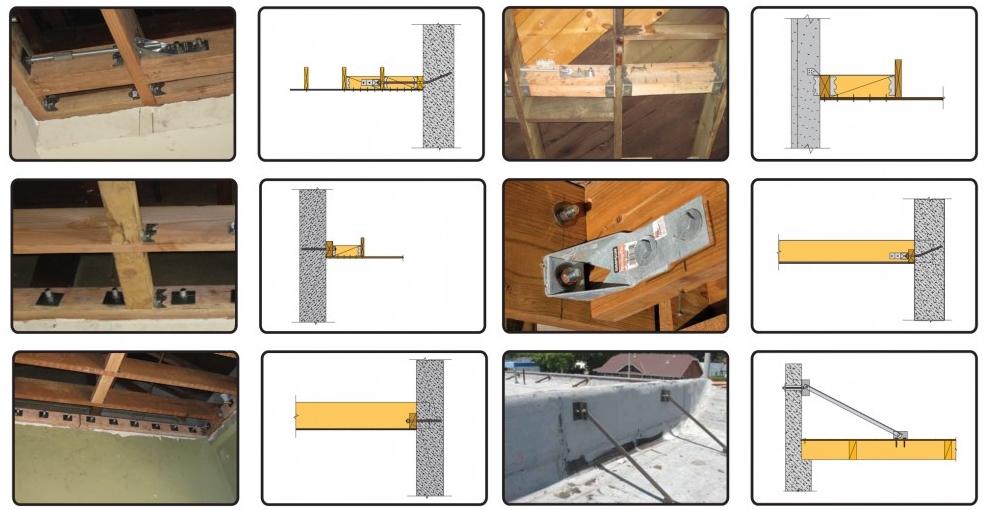
A seismic retrofit is primarily performed on existing structures to better prepare them for an earthquake. In many cases the building(s) that need to be retrofitted were built before the current California building code which requires numerous measures be taken to ensure their optimum performance and durability in the case of an earthquake or other seismic event.

(This is what you don’t want to happen…)
There are a number of different techniques that can be employed to this end. The graphic at the beginning of this post, from the San Francisco Chronicle details the main components of a “normal” retrofit project as it relates to wood framed structures. But, in the cases of very old buildings such as San Francisco’s City Hall (below) or Sacramento’s Dive Bar (where we performed a seismic retrofit in 2010) often the contractor will be dealing with bricks and in many cases bricks that have aged to such an extent that they need to be handled very carefully.
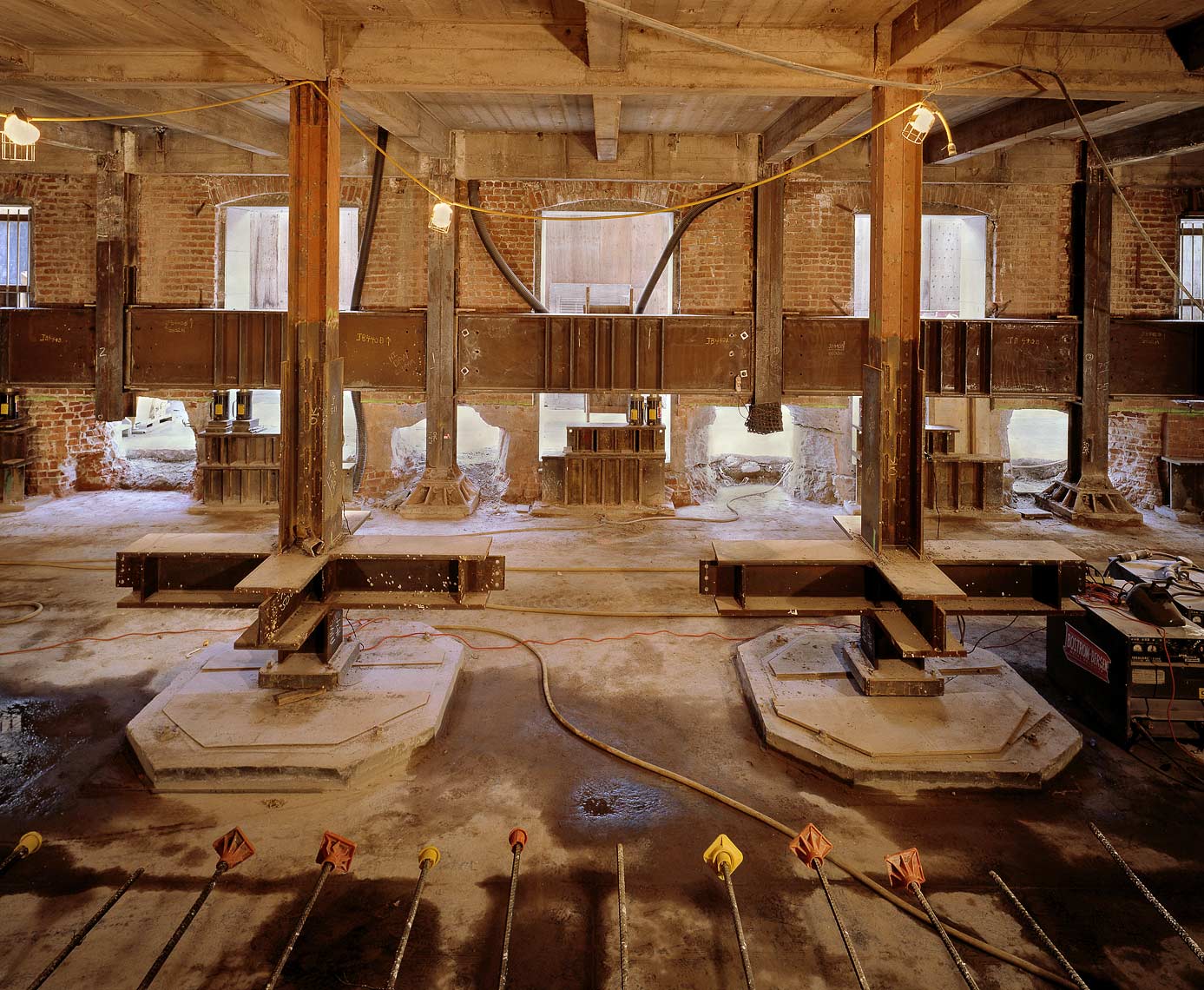
At Sacramento’s Dive Bar and Pizza Rock project – in addition to bringing the building, which was built in 1846 up to code for the renovation – they also wanted to add very heavy loads that would be bearing on the floor joist, which needed to be transferred to the new footings in the basement. At Pizza Rock, they bolted a Mack truck to the Wall, and at Dive Bar, they added a 7,500 gallon aquarium above the bar (complete with Mermaids) which was custom built into a steel frame for a bearing load of nearly 50 tons!
Pizza Rock
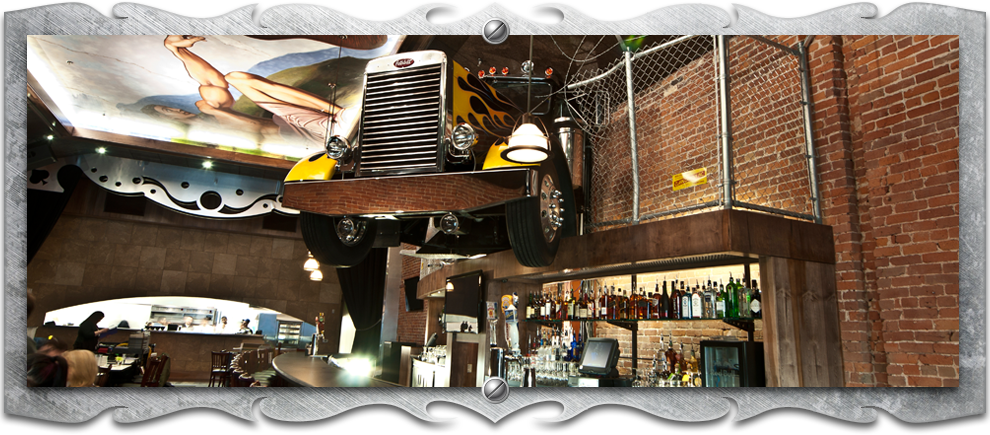
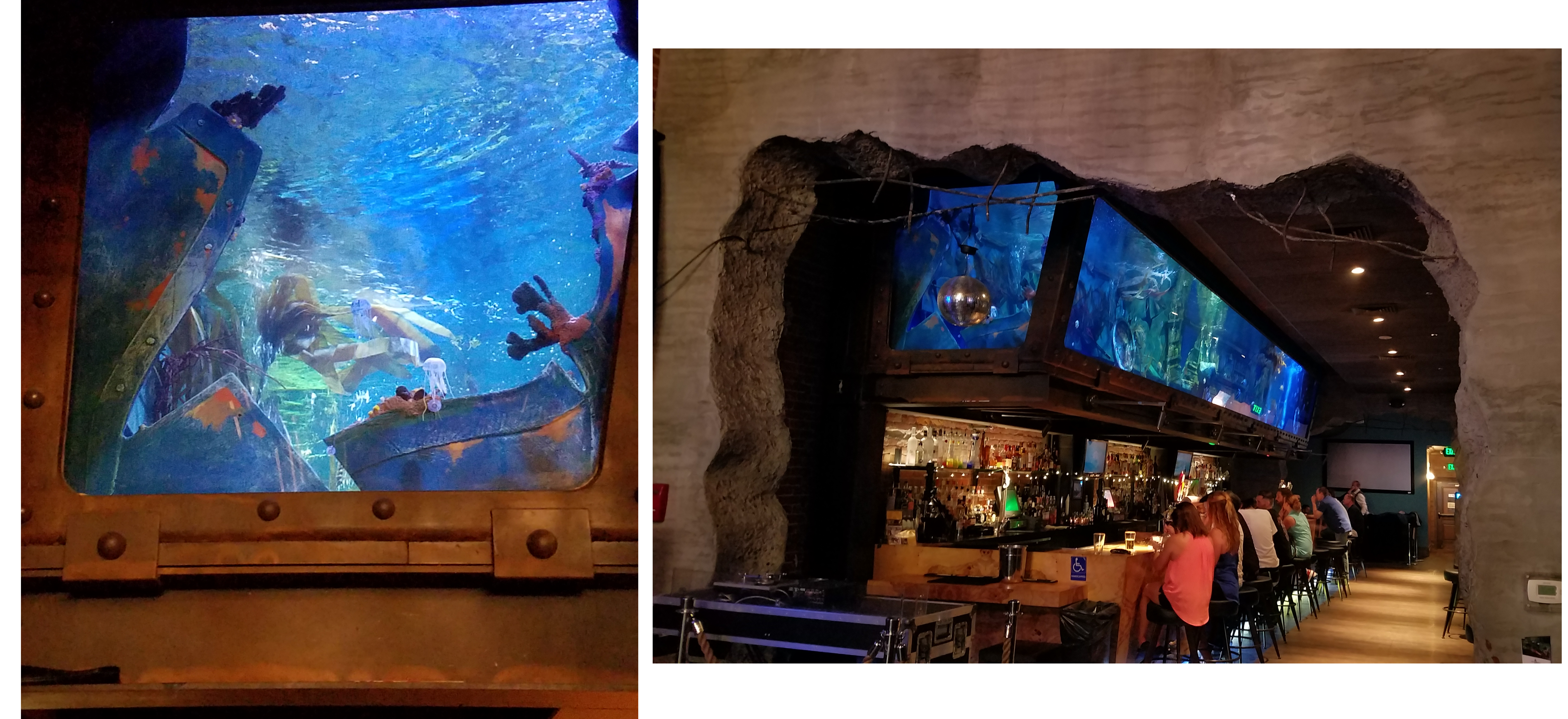
Dive Bar
This weight needed to be transferred from the floor, to the footings with painstaking care. In fact, the first wall that we sunk a roto-hammer into per the structural engineer’s notes, a large section of brick where we were drilling crumbled into dust. We ended up having to use thru-bolts with huge plate washers on each side of the wall to successfully transfer the load.
However, many newer buildings also require retrofits. These are usually much less complex and come in many shapes and sizes from Simpson plates, to hold-downs on joist, to steel struts. For more info – check out the image below.
Do you need a retrofit – if so, contact us today by clicking here –> Contact Us
